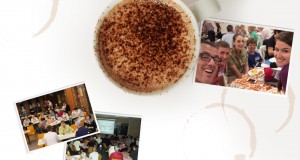One of Queensland’s iconic city churches celebrates its 150th anniversary this year, throwing the spotlight on a remarkable period of Christian witness in the south-east region. Dianne Jensen reports.
Built of local basalt and sandstone,St Stephen’s Uniting Church (formerly Presbyterian) in Toowoomba was completed in 1884. The 150th anniversary marks the establishment of the charge (parish) in 1863, although the first church was erected in 1859.
The fortunes of St Stephen’s have mirrored the evolving community of the Darling Downs, with small numbers until the population boom in the 1870s. Over the next century, both church and community flourished even in times of hardship and war.
The congregation was the catalyst for the growth of the Presbyterian Church in the region, planting churches in Drayton (1893) and Westbrook (1902), and three in Toowoomba: St Andrew’s (1906), St David’s (1926) and St John’s (1942).
It played a key role in the acquisition of Spreydon College, later Fairholme College, and the establishment of St Andrew’s Hospital in 1966.
In 1977, St Stephen’s and Scots churches voted for union, and St Andrew’s, St John’s and St David’s joined the Continuing Presbyterian Church.
St Stephen’s became part of the Toowoomba City parish together with Wesley Church, Middle Ridge, City Congregational and Blanchview.
Declining fortunes during the following years were exacerbated by a fire at St Stephen’s in 1989 which resulted in the collapse of the roof, damaging the organ beyond repair. Re-construction was not completed until 1993.
As churches began rationalising their resources, St Stephen’s became a separate congregation again in 1995. There was further turmoil in 2003, when congregations including the Rangeville congregation in Toowoomba left the Uniting Church following Assembly Resolution 84 on clergy in same-sex relationships.
St Stephen’s endured in the face of these challenges, continually seeking new ways to witness. Rev Andrew Gillies, who was called to the congregation in 2008, suggests that one of the factors behind the resilience of the congregation has been their willingness to innovate.
The congregation pioneered broadcasting their services on radio in 1925, and set up a radio Sunday School in 1946. They supported ecumenical initiatives like Wednesday Worship, a lunchtime service for city workers which ran for 20 years from 1987.
In the same spirit of openness, St Stephen’s Uniting Church is today part of the One Church online hub for Toowoomba’s Christian community.
“In more recent years the strong sense of community and identity of the congregation has helped them to survive,” says Mr Gillies.
Worship and service continue to be strengths, he adds, and St Stephen’s is a keen contributor to initiatives such as the Toowoomba Carnival of Flowers.
Coordinator of the 150th celebrations and church elder Wendy Williams has put together a program which highlights both local and church history.
The anniversary weekend will take place from 4–7 October.
For more information contact 07 4632 2971 or visit ststephensuniting.org.au
 JourneyOnline
JourneyOnline







